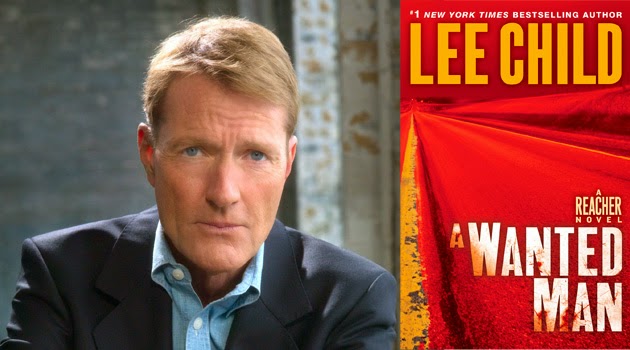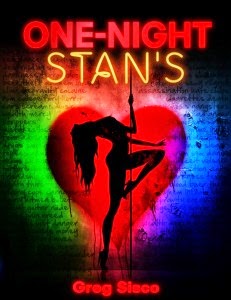 |
| Jack Reacher #15 Worth Dying For |
I
first met Jack Reacher back in 2012. Although our first encounter could easily
be described as theft, I still treasure our beginning and wouldn’t change it
for the world. I was in the Student Union at the University of Central
Missouri, waiting to meet my friend for lunch before my two o’ clock class.
Reacher sat at next to me on an end table. He was a compact novel dressed in a red
battered cover, displaying his father’s name, Lee Child, and Reacher’s
adventure he called Worth Dying For.
Reacher sat there, daring
me to pick him up, daring me to take him home. “To hell with the person who
forgot me,” Reacher had said. He had a story to tell me, and I was more than
willing to let him tell it. I slipped him into my book bag, and from there we
began our romance.
Reacher's Beginnings
Jack Reacher’s literary birth was around 1995 when Jim Grant’s eighteen-year career as presentation director at Granada Television became redundant due to corporate restrictions. Seeing a door opening for future endeavors, Jim Grant went out and bought six dollars’ worth of paper and pencils and slowly began giving birth to Reacher at his dining room table.
While
writing Killing Floor, which would
become Reacher’s first adventure, Grant and his wife
Jane were at the market,
where a lady who wasn’t tall enough to reach the top shelf asked for Grant’s
assistance. Grant, who is way over six foot, was happy to oblige. “Hey, if this writing thing doesn't pan out, you could
always be a reacher in a supermarket,” his had wife told him. Jack was then
given his last name.
 |
| Jack Reacher #1 Killing Floor |
Jim Grant then became Lee Child. He adopted the name “Lee” from
a joke within his family about the mispronunciation of Renault's Le Car. In a ’99 interview with
crimepays.com,
Lee Child spoke of what he wanted Jack Reacher to be: “Old Reacher is a mixture of a lot of things. Obviously, he’s a fictional
hero, so you start with a certain element of conscious design. For me, most of
that was negative. I knew what I didn't want him to be.
“I didn't want him to be in any way dysfunctional,
alcoholic, divorced, tired, gloomy, recovering from a previous trauma. Nothing
like that. I felt that kind of hero is an old, tired concept. Great fifteen
years ago, but now it's overdone. So I wanted him to be upbeat, confident in
himself, very competent. I wanted him to avoid silly mistakes. I wanted him to
be physically and mentally very powerful.”
With
90 millions copies sold, 19 novels published, 13 literary awards won, and 1
movie made, Lee Child’s Jack Reacher is one of the most popular literary
heroes, or as Stephen King said: “Lee Child’s tough but humane Jack Reacher is
the coolest continuing series character now on offer.”
Reacher’s Allure
What
makes Jack Reacher so alluring? In a 2012 interview with Playboy, Child himself gave the simple explanation, “Reacher is the
alpha male of the genre.” After leaving the military in 1997, Reacher became a
drifter, hitching across the United States. Reacher’s life on the road is so
simple he doesn’t own a change of clothes. When the clothes on his back become soiled,
he throws them away and buys new ones (he never seems to own a pair of
underwear, however). Trouble always finds Reacher. He uses his immense military
training and smarts to uncover an ominous mystery plaguing a town or a woman.
Reacher is also mysterious. With each novel
the reader learns a little more about Reacher’s past. Even in Reacher’s first
adventure, the reader is given very little information about who Jack Reacher
is, however, we soon discover that he is the wrong guy to cross. Reacher has
the uncanny ability to stay calm under the worst of situations. While being
held captive alongside FBI agent Holly Johnson in ’98’s Die Trying, Reacher never found himself panicking, he maintained a
level head, trying to find a way out of the predicament he found himself in.
Movie
rights have been sold as early as ’99, which for one reason or another, the
deals have always fallen through. It wasn’t until 2012 where readers got to see
Reacher on the big screen in Jack Reacher, based on Lee Child’s novel, One Shot. The movie starring Tom Cruise
grossed $218,340,595 and a sequel based on Never
Look Back is said to be in development with Tom Cruise reprising his role. Though I'm a huge Jack Reacher fan, I couldn’t bring myself to see the movie (my mind may change sooner or later). When
seeing the theatrical
poster reading Tom
Cruise is Jack Reacher I found myself yelling in my head “no, he’s not!” I can’t
picture my Jack Reacher being
portrayed as a five-foot pretty boy.
“When
you transfer a book to the screen, something’s going to give,” Lee Child said
when asked about his responds to Tom Cruise play Jack Reacher. “It seems to me
there are three essential things about Reacher. First, he’s smart. Second, he’s
still and quiet yet menacing. Third, he’s huge. It was always likely we were
going to lose one of those characteristics. The question was which. For a long
time we were fixated on his physique. We had to have a big guy. But we got
nowhere. There were no actors big enough who could do even one of the other
things. Then it came as an epiphany. Give up the physique and concentrate on
Reacher’s smartness and quietness.”
Upon
the release of Jack Reacher, a
Facebook page called Tom Cruise is not Jack Reacher was created where fans of the books
could complain about their disapproval. To date the page has generated over
10,000 likes. “Readers feel they have some incredibly intimate possession,”
Child said of the Facebook page, “Reacher is theirs alone. Now suddenly this
will be blown open. They get defensive. They think, I don’t want this taken
away from me. This is my private thing, and the whole world is going to see it.
The nature of the relationship has changed. People feel hostile toward someone
else’s interpretation of a book. Their default position is opposition. I say to
them, ‘See the movie, and then we’ll talk about it.’ My guess is that out of
every 100 book lovers, 75 will say, ‘That was really good.’ And 25 will hate
it. There’s just nothing you can do about that.”
My
personal interest in Jack Reacher goes a little further than his heroic charm.
I find him funny, I’m constantly laughing at what he’s saying or doing. And I find how
he embraces his isolation to be beautiful. Reacher is a loner by choice. He has
been given opportunities for companionship but he refuses them, because he
feels more comfort on his own.
I’ll be sure to catch Jack Reacher in his newest
adventure Make Me, coming out in
September.
 |
| Jack Reacher #20 Make Me |



